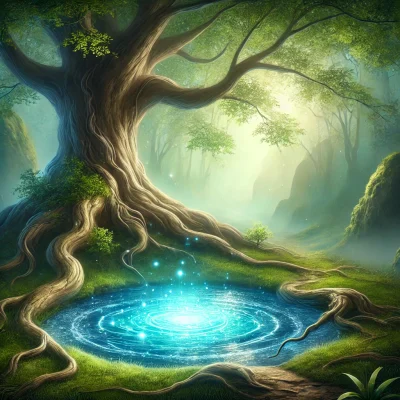SSLC English Question and Answer: The Elixir of Life
Looking for SSLC English Studies textbook answers? You can download Chapter 2: The Elixir of Life Questions and Answers PDF, Notes, and Summary here. SSLC English 1st Language solutions follow the Karnataka State Board Syllabus, making it easier for students to revise and score higher in exams.
Karnataka SSLC English Textbook Answers—Reflections Chapter 2
The Elixir of Life Questions and Answers, Notes, and Summary
Class 10 English Chapter 2
The Elixir of Life
Scroll Down to Download The Elixir of Life PDF
Comprehension I: The Elixir of Life
Question 1.
What is the imaginary elixir of life?
Answer:
The divine amrita can make man immortal.
Question 2.
What according to the writer is the real elixir of life?
Answer:
Plain water.
Question 3.
What is the ‘wonderful difference’ the writer talks about in paragraph 2?
Answer:
The ‘wonderful difference’ the writer talks about is between the two areas: the Libyan desert and the Nile Valley – the sea of billowing sand without a speck of green on the side of the Libyan desert and the green, fertile, densely populated area on the valley of the Nile in Egypt.
Question 4.
What brought about this wonderful difference?
Answer:
The wonderful difference was brought about by the water of the river Nile flowing down to the Mediterranean from its sources a couple of thousands of miles away.
Question 5.
What is the ‘cheering sight’, mentioned in paragraph 5?
Answer:
The ‘cheering sight’ to the writer is the filled rain-fed tanks that are so common in South India.
Question 6.
What does the writer compare water in a landscape to?
Why does he make this comparison?
Answers:
The writer compares water in a landscape to the eyes in a human face.
He makes this comparison because water reflects the mood of the hour, being bright and bay when the sun shines, turning dark and gloomy when the sky is overcast.
Question 7.
How does the water in rainfed tanks get its colour?
Answer:
The colour of the water in rain-fed tanks is from the silt or finely divided soil in suspension. This colour varies with the nature of the earth in the catchment area and is most vivid immediately after a fresh inflow following rain.
Question 8.
What is the main cause of soil erosion?
Answer:
Sudden bursts of excessively heavy rain resulting in a large runoff of surplus water are the principal factors causing soil erosion.
Question 9.
What other factors add to the erosion of precious soil?
Answer:
Contributory causes to the erosion of previous soil are the slope of the land, removal of the natural protective coat of vegetation, the existence of ruts along which the. water can flow rapidly gathering momentum, and the absence of any checks to such flow.
Question 10.
How can soil erosion be prevented?
Answer:
Soil erosion can be prevented by terracing the land, constructing bunds to check the flow of water, practising contour cultivation, and planting appropriate types of vegetation.
Question 11.
How does the prevention of soil erosion serve a double purpose?
Answer:
Adoption of techniques preventing soil erosion would also help to conserve and keep the water where it is wanted, i.e., on and in the soil.
Question 12.
What are the two sources of water mentioned in paragraph 10?
Answer:
Rain and snowfall.
Question 13.
The land formed of silt in alluvial areas is always fertile (Say whether the statement is True or False).
Answer:
True.
Question 14.
_________ Takes place when water carrying silt mixes with the saltwater of the sea (Complete the sentence with the appropriate word).
Answer:
Erosion
Question 15.
Planting of the appropriate type of vegetation will result in _________
a. the continuance of successful agriculture.
b. the terracing of the land.
c. preventing environmental pollution.
d. reducing the momentum of the flow of water.
Answer:
(d) reducing the momentum of the flow of water.
Question 16.
What does the writer mean by ‘civilized forests’?
Answer:
Forests created by the deliberate planting of saplings by human beings, as contrasted with wild and untamed natural jungles.
Question 17.
Mention any two advantages of civilized forests.
Answer:
Civilized forests would, directly and indirectly, prove a source of untold wealth to the country. They would check soil erosion and conserve the rainfall of the country from flowing away to waste.
Question 18.
How will the development of hydroelectric power help to overcome the inadequacy of the water supply?
Answer:
The development of hydroelectric power would enable underground water to be tapped to a greater extent than at present and thus help to overcome the difficulties arising from irregularity or inadequacy of other sources of supply.
Question 19.
Complete the following sentences with appropriate details:
a. The Nile Valley is the creation of ________
Answer:
the river itself. It was brought down as the finest silt in its floodwaters from the highlands of Abyssinia and remote Central Africa and laid down through the ages in the trough through which the Nile flows into the sea.
b. _____ are a ‘cheering sight.’.
Answer:
Rain-fed tanks in South India when they are full.
c. A remarkable feature of water is its power to carry ______
Answer:
silt or finely divided soil in suspension.
d. It is the silt which gives _____ to the water in rainfed tanks
Answer:
the characteristic water.
e. __________ the foundation of all agriculture
Answer:
The upper layer of soil.
f. Ruts are formed by __________
Answer:
rapidly flowing rainwater.
g. Terracing of lands helps in _____________
Answer:
preventing soil erosion.
h. Indian agriculture depends heavily on _____________
Answer:
seasonal rainfall.
i. Farmyard manure should not be used as ____________
Answer:
fuel.
j. ____________ would enable the overall development of the rural economy.
Answer:
Availability of electric power.
Comprehension II: The Elixir of Life
Question 1.
Much of Indian agriculture depends on seasonal rainfall and is therefore very sensitive to any failure or irregularity of the same
a. In what context does the writer say these words?
Answer:
The writer talks about soil erosion and the importance of conservation of water. Conservation of water would help agriculture at times of irregular or inadequate rainfall. The techniques of conservation of water would prevent soil erosion, which is of great importance to agriculture.
b. What does “same” refer to?
Answer:
“Same” refers to rainfall in India.
c. Why is Indian agriculture “very sensitive”?
Answer:
Since Indian agriculture depends on seasonal rainfall and does not have many other sources of water, it is “very sensitive”—easily” affected by inadequate or irregular rainfall.
Question 2.
They would check soil erosion and conserve the rainfall of the country from flowing away to waste and would provide the necessary supplies of cheap fuel, thus rendering unnecessary the wasteful conversion of farmyard manure into a form of fuel.
a. What does “they” in the first line refer to?
Answer:
Vegetation like shrubs and trees is grown to check soil erosion.
b. What is the cheap fuel referred to in the passage?
Answer:
Dried branches and leaves of trees are grown to prevent soil erosion.
c. How would cheap fuel help the farmer?
Answer:
He could preserve the farmyard manure to enrich his farmland.
Comprehension III: The Elixir of Life
Question 1.
How does C.V. Raman show that water is the real elixir of life?
Answers:
- Water makes the difference between a barren desert and a fertile valley teeming with life and vegetation.
- Water plays an important role in shaping the history of the earth.
- Water bodies add to the beauty of the scenery.
- Water has the power to carry silt, which is very necessary for agriculture.
- Water creates this silt by flowing over the rocks of the earth’s crust.
- Water is the basis of all life, animals, plants, or human beings.
Paragraph: C.V. Raman shows that water is the elixir of life. He gives us the example of the Libyan desert, where there is no vegetation and not a single living thing is visible. On the other hand, in the immediate neighbourhood, the Nile Valley is teeming with vegetation and people. The water of the Nile Valley has made all the difference.
He says that water is a wonderful thing, and it has shaped the history and the civilization of our earth. He also adds that the presence of water makes the countryside beautiful, and it has enabled agriculture to thrive. Water enriches the soil and makes it fertile.
If water is used judiciously, it can improve our economy by generating electricity as well and provide us with cheap means of internal transport. He tells us that water is fundamental for human welfare.
Question 2.
What are the various causes of soil erosion? How can we prevent it?
Answers:
Heavy rain
- The slope of the land, removal of vegetation, ruts that enable water to flow faster, and absence of barriers to check the flow of water.
- Preventive action would be terracing of land, consumer action sounds to check flow, contour cultivation, and planting of vegetation.
Paragraph: C.V. Raman says that soil erosion is a major problem in India. Soil erosion happens due to several reasons: Firstly, a sudden downpour of heavy rain can result in excess water carrying topsoil into the sea. Secondly, the slope of the land, the removal of the natural protective coat of vegetation, and the existence of ruts along which water can flow rapidly can lead to erosion. Thirdly, the lack of bunds to prevent water from flowing forcefully can lead to erosion of soil.
Question 3.
What does C.V. Raman say about rain-fed tanks?
Answers:
- Rain-fed tanks are common in South India.
- Beautiful when full.
- Shallow, but the bottom does not show up.
- Play a vital role in agriculture.
- They are surprisingly large.
Paragraph: C. V. Raman tells us that rain-fed tanks are common in South India, and they are beautiful when they are full. But they are not well maintained. These tanks are shallow. The water in these tanks is full of silt. These tanks play an important role in South Indian agriculture. Some of them are large and look beautiful when the sun rises or sets over them.
The Elixir of Life
**”The Elixir of Life”** is a thought-provoking essay by Sir C.V. Raman that emphasizes the vital importance of water to life on Earth. Raman, a renowned Indian physicist, reflects on water’s role in sustaining life, shaping landscapes, and influencing the climate.
The essay begins by discussing the universal presence of water in different forms—rivers, lakes, seas, and rain—and its cyclical nature through evaporation and precipitation. Raman highlights the way water transforms barren lands into fertile grounds, illustrating its role in agriculture and the sustenance of human civilization.
Raman also touches on the aesthetic and spiritual value of water, describing how the beauty of water bodies and the soothing sound of flowing water inspire human creativity and tranquillity.
In conclusion, “The Elixir of Life” serves as a reminder of the preciousness of water, urging readers to appreciate and conserve this indispensable resource for the continued survival of life on our planet.

